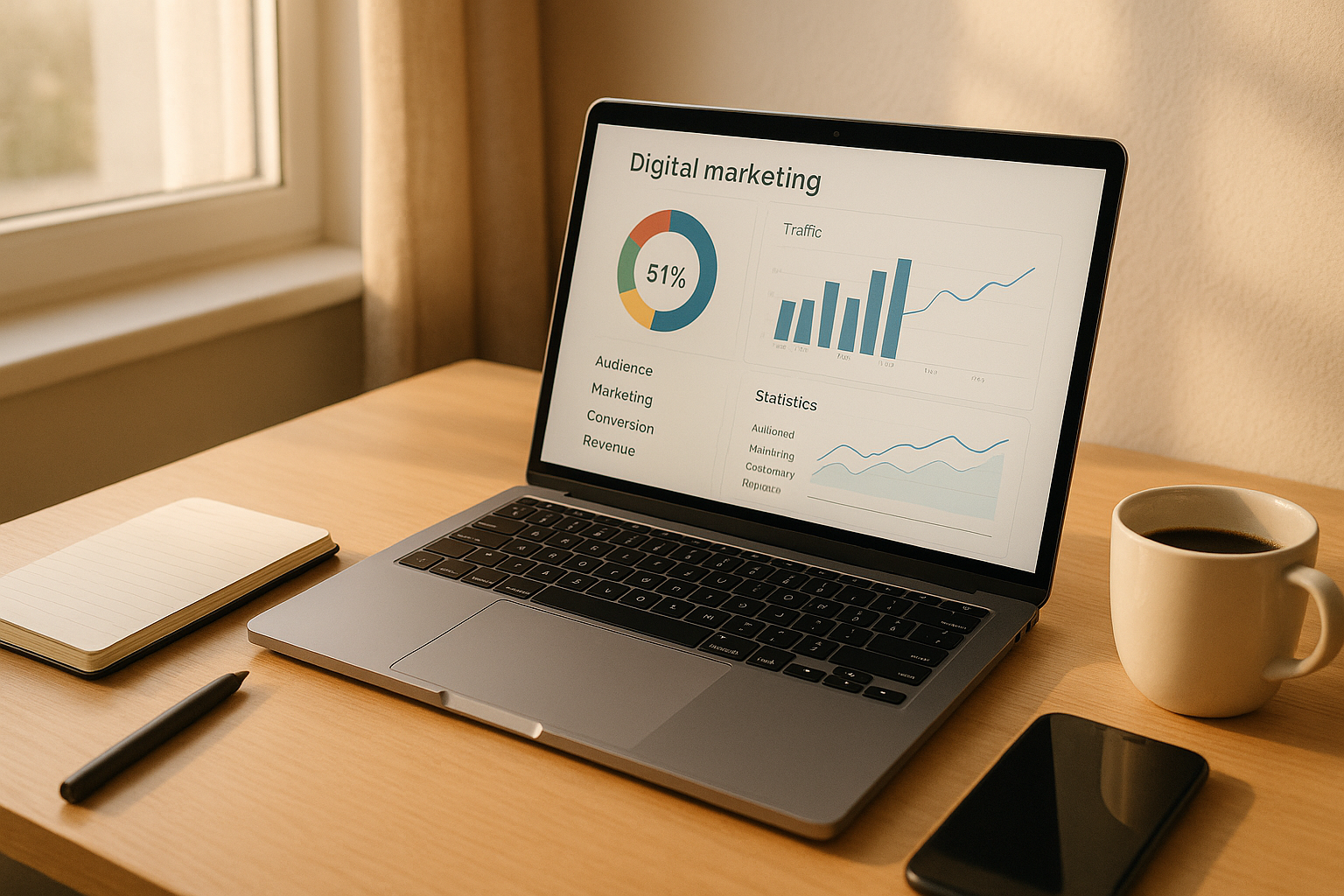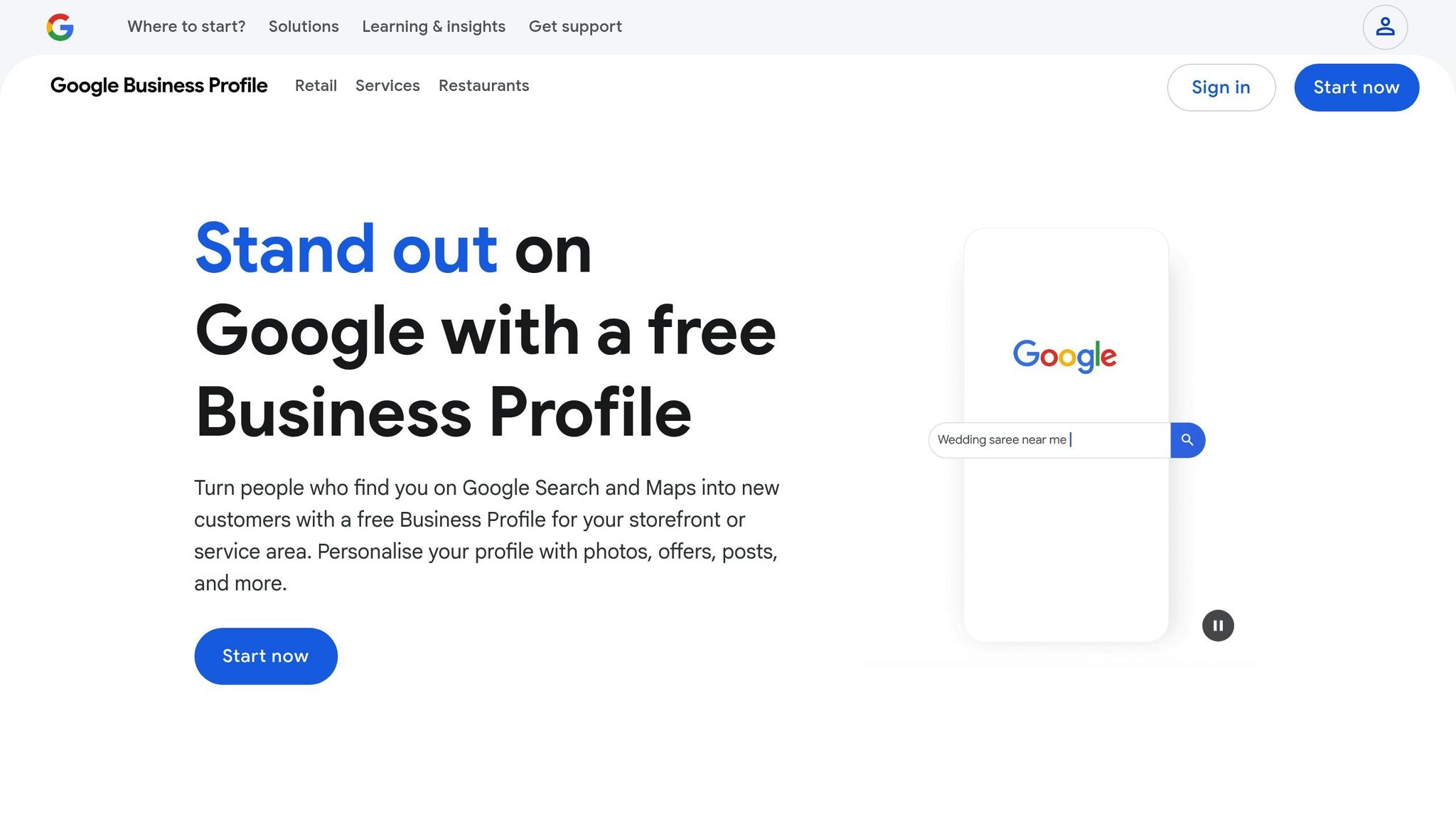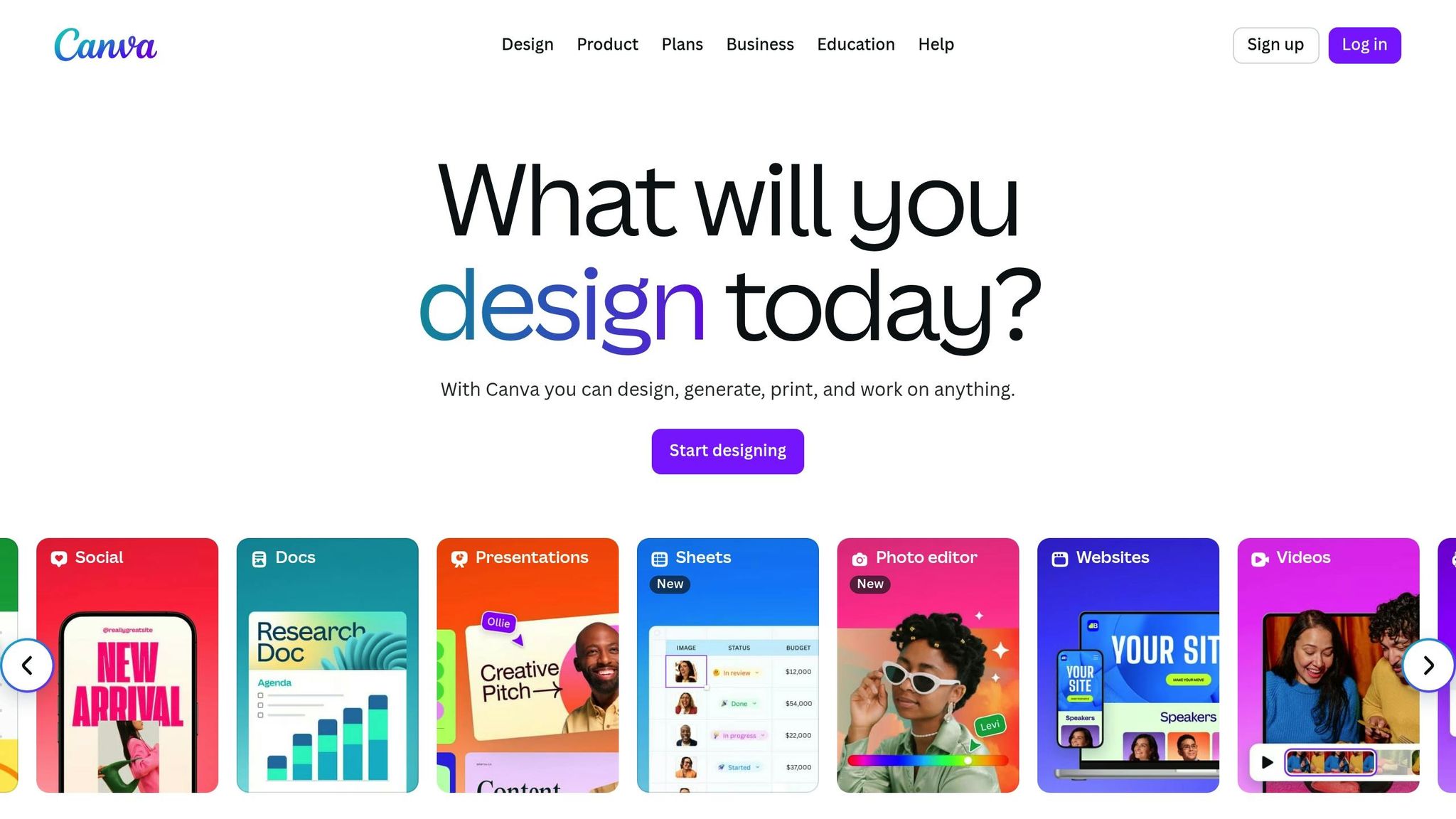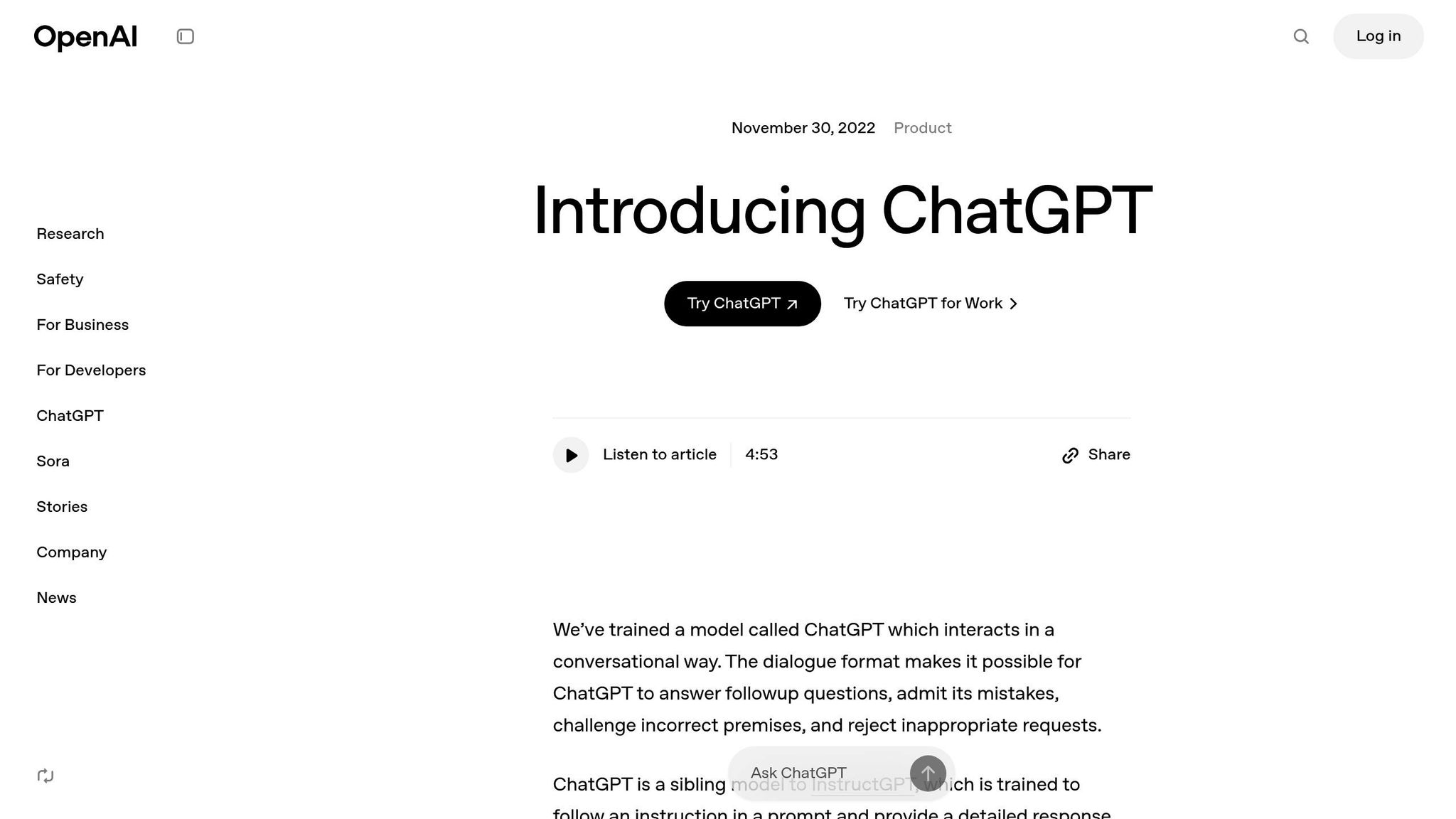
Bootstrapping your digital marketing: maximum impact with minimum budget
Bootstrapping your digital marketing: maximum impact with minimum budget
Do you think a limited budget is a hindrance for your business? Think again. With a targeted approach and accessible tools, it is possible to achieve tangible results, even for an SME or startup in Switzerland. Here are the essential points to maximize your efforts:
- Set clear objectives: Use the SMART method to define measurable and realistic priorities.
- Invest in cost-effective tools: Google My Business, Canva, and ChatGPT are your allies to improve visibility without spending a fortune.
- Optimize your bilingual SEO: In Switzerland, French and German are essential to reach a local audience and expand your reach.
- Adopt a local approach: Prioritize channels that directly attract your clientele, such as Google My Business or others.
- Monitor your performance: Use Google Analytics and Search Console to adjust your actions and maximize your return on investment.
Key tip: Focus your efforts on what works, test regularly, and adjust based on results. Every franc invested can make a difference if you prioritize intelligently.
Marketing Tier List: The BEST Actions for a Limited Budget (MAX ROI)
Defining Clear and Measurable Marketing Objectives
Before diving into digital marketing, it is essential to know exactly where you want to go. This prevents wasting resources, especially if they are limited. Well-defined objectives help focus your efforts on what truly matters. For example, for a Geneva-based SME with a monthly marketing budget of CHF 2,000.–, every action must be thoughtful and have a measurable impact.
Understanding SMART Objectives
The SMART method is an effective approach to turn general ideas into concrete objectives. Here's what each letter means:
- Specific: Your objectives must be precise. For example, instead of saying "increase sales," specify "increase sales of our accounting advisory service."
- Measurable: Set measurable indicators. For example: "generate 50 new qualified leads per month."
- Achievable: Ensure your objectives are realistic based on your resources. If you are new to Instagram, hoping for 10,000 followers in a month is unrealistic.
- Relevant: Your objectives must align with your overall strategy. A B2B company, for example, would have little interest in heavily investing in TikTok.
- Time-bound: Give yourself a clear deadline. For example: "achieve this objective by December 31, 2025."
Let's take a concrete example: a Swiss startup could set a SMART objective as "Increase organic traffic to our website by 40% by June 30, 2025, by publishing two blog articles per week and optimizing ten existing pages for the ."
Once the objectives are defined, it becomes crucial to prioritize them based on their impact and the available resources.
Prioritizing Objectives Based on Available Resources
With a limited budget, trying to do everything at once is a recipe for failure. It is better to prioritize your objectives based on three criteria: their potential impact, cost, and time required to achieve them.
To simplify, assign a score to each objective based on its potential impact (1 to 5) and ease of execution (1 to 5). Focus on those with the highest scores in these two categories. For example, optimizing your Google My Business listing (high impact, low cost) should take precedence over a complex advertising campaign (uncertain impact, high cost).
Example budget allocation for CHF 1,500 per month:
- 60% for SEO and .
- 30% for targeted advertising.
- 10% for marketing tools or software.
Take the example of an artisanal bakery in Geneva. It would be wise to focus on Google My Business and Instagram, which directly reach its local clientele, rather than spreading efforts across LinkedIn or Twitter. Being active and consistent on two or three channels is much more effective than sporadic presence on ten platforms.
Lastly, remember to reassess your objectives every quarter. Priorities may change, and regularly adjusting your strategy will help you stay aligned with your main objectives while remaining flexible to changes.
Using Cost-Effective Digital Marketing Tools
When you have a limited marketing budget, every franc must be invested wisely to achieve tangible results. Fortunately, there are many free or low-cost tools that allow Swiss SMEs to improve their online visibility. These solutions, designed for small businesses, enable efficient work focusing on specific goals without wasting resources. Here's how to make the most of these tools.
Optimizing Local Presence with Google My Business

Google My Business is often overlooked, but it can play a key role in a business's local visibility. For a , appearing among the top results in local searches can attract significant traffic to your website and store.
To maximize this tool, it's not enough to fill in basic information. Take the time to complete all available fields: detailed hours (including Swiss holidays), local phone number, website, and a comprehensive description of your services. If you target the Swiss German market, also add a German version.
Photos are essential to capture attention. Add quality images showing your storefront, premises, team, or products. Update them regularly to reflect your business's evolution.
Also, use the "Posts" feature of Google My Business. It's an ideal space to share announcements, seasonal promotions, or events. Post regularly, even once or twice a week, to keep your listing active and improve your local SEO.
Finally, do not underestimate the importance of customer reviews. Respond to every review, whether positive or negative, within 48 hours. A professional and personalized response shows that you are attentive and enhances prospects' trust.
Once your local presence is optimized, it's time to work on your using a tool like Canva.
Creating Quality Visuals with Canva

The visual appearance of your communication can influence your brand's perception. With Canva, even without design skills, you can create attractive and professional visuals.
If your budget allows, Canva Pro subscription can be a good investment. It offers interesting features like a library of royalty-free images, a background removal tool, and a "Brand Kit" to centralize your colors, fonts, and logos.
To start, create a . Define your main colors with their hexadecimal codes, choose two or three consistent fonts, and upload your logo in high definition. This visual consistency will strengthen your brand image.
Canva also offers a convenient resizing feature. For example, design a visual for Instagram, then easily adapt it for Facebook, LinkedIn, or your stories, while maintaining visual harmony.
To reach the Swiss audience, personalize your visuals with local elements. Integrate images evoking the Alps or Swiss traditions, and add your own photos to reinforce authenticity.
With consistent visuals in place, you are ready to produce engaging content using a tool like ChatGPT.
Optimizing Content Creation with ChatGPT

Artificial intelligence has changed the game for content creation, especially for businesses addressing multilingual audiences. ChatGPT can be a valuable ally in producing texts in French and German.
The ChatGPT Plus subscription offers benefits like priority access and advanced features. This can be useful for quickly generating blog articles, social media posts, or newsletters tailored to your industry.
For best results, give ChatGPT precise instructions. For example, instead of simply asking "Write an article about our services," detail your expectations: "Write an 800-word article on the benefits of outsourced accounting for Geneva SMEs, with three concrete examples and a professional yet accessible tone."
Create prompt templates to save time. For a LinkedIn post, you could request: "Write a 150-word LinkedIn post on [topic], with an expert yet friendly tone, three relevant hashtags for the Swiss market, and an engaging question to finish."
ChatGPT can also translate your content while adapting references to the Swiss context. For example, it can translate a text into Swiss German while adjusting the tone and examples to match the local culture. Additionally, by analyzing the performance of your posts, it can identify what works best and help you replicate those successes.
With ChatGPT, you can produce quality content while sticking to a tight budget.
Applying Bilingual SEO for Local and International Exposure
In Switzerland, bilingual SEO represents a major strategic opportunity for businesses. Optimizing your SEO in French and German expands your visibility. For example, an SME based in Geneva, aiming to attract clients in Zurich or Bern, will find this approach indispensable. Not only does it broaden its local audience, but it can also position itself in French and German-speaking international markets.
However, the real challenge lies in managing both languages technically while ensuring a consistent . A well-executed strategy can double your potential audience without requiring an exorbitant marketing budget. Let's look at the technical steps necessary to succeed in this implementation.
Implementing Bilingual SEO Strategies
For structuring your website, hreflang tags are essential. In the case of a Swiss site, use tags like hreflang="fr-CH" for Swiss French and hreflang="de-CH" for Swiss German. These tags prevent duplicate content issues and redirect users to the appropriate language version.
Bilingual keyword research should consider differences between language regions. For example, a customer in Geneva might search for "comptable Genève," while in Zurich, they might type "Buchhalter Zürich." Use Google Keyword Planner to set Switzerland as the geographic area and alternate between French and German to identify relevant terms.
Also focus on long-tail keywords in each language. These specific phrases, like "Cabinet comptable PME Genève" or "Buchhaltung KMU Zürich," attract qualified traffic while being less competitive and more cost-effective for advertising campaigns.
Beyond keywords, it's crucial to adapt content to local realities. Content localization goes beyond simple translation. For example, an article on corporate taxation could include Geneva specifics for the French version and Zurich specifics for the German version. Even images and references should reflect regional sensitivities.
Finally, remember to optimize metadata for each language. Each page should have unique titles, descriptions, and alt tags tailored to the respective language. These adjustments strengthen your positioning in local searches.
Tracking Performance with Free Analytics Tools
To evaluate your efforts, Google Analytics and Search Console are your best allies. In Google Analytics, create custom segments to distinguish French-speaking from German-speaking traffic. Analyze the most visited pages, time spent on the site, and conversions for each language.
With Search Console, ensure all your pages are properly indexed and promptly correct reported errors. Examine search queries driving clicks to your site to identify keyword opportunities you may not have considered.
Add Google Trends to track search trends over time. This tool allows you to compare the popularity of your keywords in French and German. You can adjust your strategy based on seasonal or local events.
By analyzing the best-performing content, you can allocate your resources more effectively. Focus your efforts on pages generating the most conversions and optimize those with disappointing results.
Improving User Experience Without Breaking the Bank
User experience (UX) plays a key role in a site's success, especially in a demanding Swiss market. Here are three simple and cost-effective strategies to capture visitors' attention and make the most of every franc invested.
Emphasizing Mobile-First Design
With a significant portion of traffic coming from mobile devices, adopting a is no longer an option but a necessity. This means designing first for mobile screens before adapting the design for computers.
- Evaluate your site: Use the Google Mobile-Friendly Test tool to identify issues like small fonts, improperly sized buttons, or overflowing elements.
- Optimize mobile navigation: Include a clear hamburger menu, ensure buttons are at least 44 pixels high, and simplify forms by reducing the number of fields and using explicit labels.
- Adapt content: Prefer short texts and catchy headlines that are easy to read on a small screen. Also, reduce image sizes to avoid slowdowns.
- Regular testing: Check how your site looks and functions on different devices to ensure a consistent experience.
Speeding Up Load Times and Simplifying Navigation
No one likes waiting for a site to load. Slow speed can quickly discourage visitors, directly impacting your results.
- Analyze your performance: Google PageSpeed Insights is a handy tool to identify areas for improvement.
- Optimize files: Compress your images (WebP format is recommended), reduce the size of CSS and JavaScript files, and enable caching to speed up load times. Free tools like TinyPNG can assist with compression.
- Implement lazy loading: This technique loads images only when they become visible on the screen, improving fluidity.
- Facilitate navigation: Organize a clear architecture and provide a prominent language selector to switch between French and German without losing position. Use universal icons and ensure key information is accessible within a few clicks from the homepage.
Creating Impactful Calls to Action (CTAs)
Well